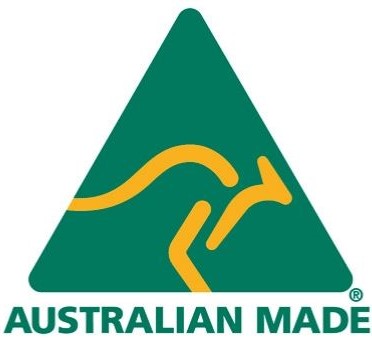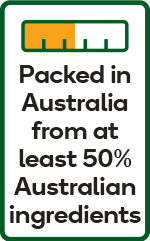Country of origin food label responsibilities
The Country of Origin Food Labelling Information Standard 2016 (Standard) commenced on 1 July 2016 under the Australian Consumer Law (ACL).
From 1 July 2018, if you are a business offering food products for retail sale in Australia, you must comply with the Standard.
The type of label required for food products varies depending on:
- the category of food
- whether it was grown, produced, made or packed in Australia or another country
- whether it is packaged or not
- whether the food is a ‘priority’ or ‘non-priority’ food
- how the food is displayed for sale.
Displaying labels
Under the Standard, most foods produced, grown or made in Australia need to display a label with:
- the kangaroo in a triangle system to help consumers easily and quickly identify the food’s Australian origin
- a bar chart showing the minimum proportion of Australian ingredients by ingoing weight, shown as a percentage amount
- a text statement indicating that the food was grown, produced or made in Australia.
Food packaged and labelled on or before 30 June 2018 can still be sold without the new labels and can still be sold without the origin of food labels.
There are a guide and online tool for you to use when determining whether country of origin food labels comply with the Standard:
- How to display the Standard
- Online tool for country of origin labelling
- Frequently asked questions for importers
Types of origin claims
The key country of origin claims mean different things.
Grown in
A ‘grown in’ claim is commonly used for fresh food. It can also be used for multi-ingredient products to show where the food was grown and processed.
Made in
‘Made in’ is a claim about the manufacturing process involved in making a food product. Because it refers to the processing that has taken place, it doesn’t mean the food contains any ingredients from that country.
Example

Packed in
‘Packed in’claims are used for foods that contain ingredients from multiple countries and can’t claim to have been grown, produced, or made in Australia or any other country.
Example

Imported products
Imported products labelling states the country of origin. This origin statement must be placed in a clearly defined box on the label for most imported foods.
Example

Priority requirements
There are different labelling requirements for priority and non-priority foods.
Priority foods
Priority foods include:
- fruit and vegetables
- meat
- bread
- milk
- cereal.
Most priority foods need to display new graphic and text labels, which tell you how much of the food is Australian (if any).
For instance, you could see a loaf of bread labelled as ‘Made in Australia from at least 95% Australian ingredients’, which means the bread was baked locally using ingredients that were mostly grown or produced in Australia.
Priority foods can only claim to be produced or grown in Australia if they contain 100% Australian ingredients.
Non-priority foods
Non-priority foods only need to carry a text statement about where the food was grown, produced, made or packed.
A product is a non-priority food if it belongs to one of these categories:
- seasonings (e.g. pepper, salt, spice powders or pastes)
- confectionery (e.g. chocolate bars, lollies, ice cream)
- biscuits and snack foods (e.g. chips, crackers, rice cakes, pork crackling)
- soft drinks and sports drinks (e.g. lemonade, flavoured waters, carbonated fruit drinks)
- alcoholic drinks
- tea and coffee
- bottled water.
Penalties
Failure to comply with the Standard can result in enforcement action.
If you do not comply, you also risk breaking ACL provisions against false, misleading or deceptive claims.
Maximum fines are:
- $220,000 for individuals
- $1.1 million for a corporation.
Further information
Information on the Standard and further information about labelling is available from the Australian Competition and Consumer Commission.


